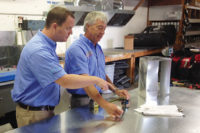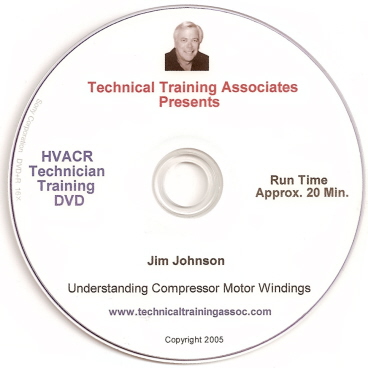The author of the “Trends in Compressor Design” series, Henri Soumerai, accurately predicted the future shift that took place in compressor development. So it’s fitting to tune in again to hear what this compressor expert has to say about the history and future trends in compressor design.
‘MR. COMPRESSOR'
A native of Geneva, Switzerland, Soumerai is currently still writing papers about the refrigeration industry, although he is no longer actively employed. During the first part of his career he worked for a variety of companies, including Therma AG, Worthington Pump, and Dunham-Bush, essentially earning the title of “Mr. Compressor.”Through his work at various compressor manufacturers, Soumerai gained experience with all three major categories of compressors - reciprocating, turbo (or centrifugal), and rotary. “This was very unusual - you won’t find too many people in America who had these opportunities,” he said.
It was this combination of experiences that enabled him to make his predictions in 1966 about where the industry was headed - and his main prediction was that the screw compressor would grow in prominence in the industry, along with other future valveless positive-displacement rotary compressors.
His prediction was hotly contested by others in the industry, some of whom wrote to The NEWS to express their opposing views. “I responded, let’s wait a few years and see what happens,” Soumerai said. “And what happened was exactly the way I predicted it - not because I’m a genius, but because I was exposed to all kinds of compressors, and it was obvious what would happen.”
COMPRESSOR REVIEW
In order to better understand compressor technology, Soumerai explained that it’s helpful to review the main classes of compressors: dynamic (or turbo) and volumetric (or positive displacement), which includes reciprocating and rotary.“There are basically only two major classes according to the fundamentally different methods by which the required increase in gas pressure is obtained. In the case of turbo, this is achieved by converting kinetic energy, as opposed to physically ‘squeezing’ the gas, as in the case of recip and rotary,” he explained.
He continued, “Each class [of compressors] has its good features and its limitations. The turbo compressor is doubtless a superb high-flow, high-speed machine, but its major handicap is what I call its Achilles’ heel - namely, its inflexibility, or narrow range of applications. Without this fundamental design weakness, the most compact high-speed [variable-frequency drive] VFD turbo could displace from the air conditioning market all other types of compressors, down to a capacity of about 50 tons.”
Among the volumetric machines, the reciprocating compressor with its automatic valves “is the machine best suited to applications where highly variable compression ratios are required,” Soumerai said. However, its need for valves limits its speed.
Comparing reciprocating to rotary, Soumerai pointed out, “The valveless rotary has a bit of a limit with highly variable compression ratios. In its simplest version, it is designed with a single built-in optimum compression ratio - too far above or below and the performance isn’t as good.”
However, Soumerai noted, “This problem can be offset in the case of screw compressors with variable built-in compression ratios.” He noted that this option is more expensive. “On the other hand, the valveless rotary can operate more efficiently at higher speeds with integral VFD [variable frequency drives] than the recip.”
He summed up his review, stating, “All in all, large (greater than 25 hp) sliding vanes, scroll, and screw compressors are the best compromise for the majority of applications.”
WHAT LIES AHEAD?
Soumerai recently wrote an article published on the ASHRAE website about the history of compressor development. In it, Soumerai said, “I make a strong point that reciprocating and turbo are the most mature technologies, so there is little room for breakthroughs in these.”In contrast to these technologies, he said, “Radically new and still immature technologies such as screw and scroll compressors will more likely spawn new technical breakthroughs.”
As an example, he noted that recent developments in screw compressors have led to the introduction of multirotor screw compressors. Moreover, he noted, “Most major independent refrigeration compressor manufacturers are now offering some type of rotary design.”
Soumerai added that the most recent and significant breakthroughs in compressor designs have come about as a result of the availability of VFDs. “In the case of volumetric compressors, the main advantages of VFDs are optimized programmable, continuous capacity modulation without the need for a mechanical unloading device.” He added, “Higher design speeds without mechanical step-up gears have resulted in extremely compact turbo and rotary designs.”
In addition to his predictions that new developments will come in screw and scroll technologies, Soumerai also forecasted, “We may one day have ammonia hermetic rotary compressors.”
To paraphrase his words from more than 40 years ago, time will tell if these predictions of his also come true.
Sidebar: Voice From the Past
In the epilogue to his 1965-66 series, Henri Soumerai stated, “It is clear that there is the opportunity economically to meet the customer’s need in the large refrigeration and air conditioning market with new, improved machinery other than long-established reciprocating and centrifugal compressors.“We believe that one good alternate choice, from the customer’s viewpoint, is the positive-displacement rotary compressor, direct coupled to 3,500 rpm or 2,900 ac motors, which can be operated without automatic valves.
“We are suggesting that the screw-type compressor may be a solution (not to the exclusion of other alternate solutions) and have tried to show why.
“Time and experience will tell to what extent our respective points of view will prevail; perhaps, the best thing to do is to stop this dialogue and wait a few years.”
Publication date:03/28/2011









